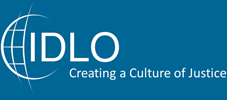After the brutal rape of a young woman in New Delhi in 2012, the issue of violence against women in India was thrust into the spotlight. The intensity of the national outcry in the aftermath led to the establishment of the Verna Committee, a governmental branch dedicated to addressing the issue of violence against women.
In 2013, a domestic violence incident was reported every five minutes. In 2012, more than 2 rape cases were reported every hour. And, according to a report from UN Special Rapporteur, 2 out of 3 women who have been victims of violence have never sought help nor told anyone about the violence committed against them.
Violence against women in India remains a severe problem.
The Verna Committee released a report in 2013 citing the abject failure of the State to properly protect women against sexual violence and provide protective homes for distressed women and children. While there are Women’s Protection Centres (WPCs) in India covering both short and longer term stays, the number of sanctioned shelters is insufficient and has even decreased over the past decade.
While most shelters in India are government funded, the money allocated is not enough to cover long term needs and often takes too long to reach the centres to have a real effect. As a result of this funding crisis, shelters in India have developed expertise in fundraising, income generation and exit strategies for their beneficiaries.
As part of IDLO’s Supporting Access to Justice in Afghanistan (SAJA) program, a study tour to New Delhi was organized to learn about different approaches and innovations taken by organizations in India to promote income generation and empower women to support themselves. The tour group consisted of 12 participants from Afghan shelter partners including, the Ministry of Women’s Affairs (MOWA), Voice of Women Organization, Women for Afghan Women, Humanitarian Assistance for the Women and Children of Afghanistan and Afghan Women Skills Development Center.
WPCs in Afghanistan are largely reliant on donors and need to seek out funding from different sources as foreign aid diminishes. They also face challenges with reintegrating women back into society, as so few women become independent enough to exit.
A number of organizations in India work to build the capacity of women through financial and vocational training. SEWA (Self-Employed Women’s Organization) provides support to women as they take out a loan, open bank accounts, manage their own money and earn revenue on original products. The Navjyoti India Foundation, in addition to providing training for economic independence, highlights community development with the mandate: if women are empowered, they can empower their communities in return.
The legal framework in India also has a role to play in the scheme of women’s economic empowerment. WPCs in India benefit from the 2014 Corporate Social Responsibility (CSR) Law, where private companies are legally bound to contribute 2% of earnings to social organizations.
Afghan participants on the tour expressed ways in which India’s examples could benefit the Afghan situation. A vocational trainer working at an Afghan shelter NGO noted, “I was very impressed how SEWA runs the cooperative. In Afghanistan, there is no organization running a cooperative to lend money for the business of women. SEWA did not have the facilities, like the office space and furniture, but they did very good work with very little facilities.”
Lessons from the tour demonstrated the importance of coordination between shelter homes, governmental services and implementing agencies (NGOs) to address these issues. While the government of India has been heavily criticized for not improving the conditions of the shelters, there are tangible benefits to working closely with them.
An Afghan participant commented, “I liked how Guild for Service has a good relationship with the government in India. We both do vocation training classes for beneficiaries, but in Afghanistan we cannot provide women with a certificate approved by the government like in India. The shelter was not in the best condition, but they still offered good programming and all the beneficiaries were happy... We can learn from India.”

